If you’re a keen amateur cook, the minute you step above IKEA knife block, there is a bewildering array of knives and the costs of some are mental, so Id intended this as a common sense guide to what is cost effective and useful. Generally if you’re spending more than £50 on a knife you need to stop and ask yourself do I really need this? Or is it just all the gear and no idea. You don’t need a chefs knife that could look the part in a Conan film, and you don’t need that sushi blade because nobody will be impressed except the salesman or website accountant. This is about having a useful set of tools in the kitchen that help you out. The current trend seems to be for folded steel - as used in Samurai swords. Fashion for knives goes through all kinds of turns. I remember when there was a fixation for ceramic blades and then the Global knife brand was all the rage. The truth of the matter is that quality counts but its doesn’t need to cost very much. Ive had many of my knives for decades and they are as sharp now as they ever were. Some were given to me and cost a lot, and some I bought sensibly priced.
Important notes : Never put decent knives in a dishwasher - ever, period. I don’t care what the guarantee says - you will regret it.
Sharpening : I use a gizmo, it’s a rotary wheel inside a handle that you put on the kitchen side and roll the blade in it. Great for some knives - not so good for others. Some blades like the cleaver need a whetstone and elbow grease. A steel - it looks impressive but I can guarantee unless you are highly versed my gizmo sharper will do a much better job and its a million times easier.
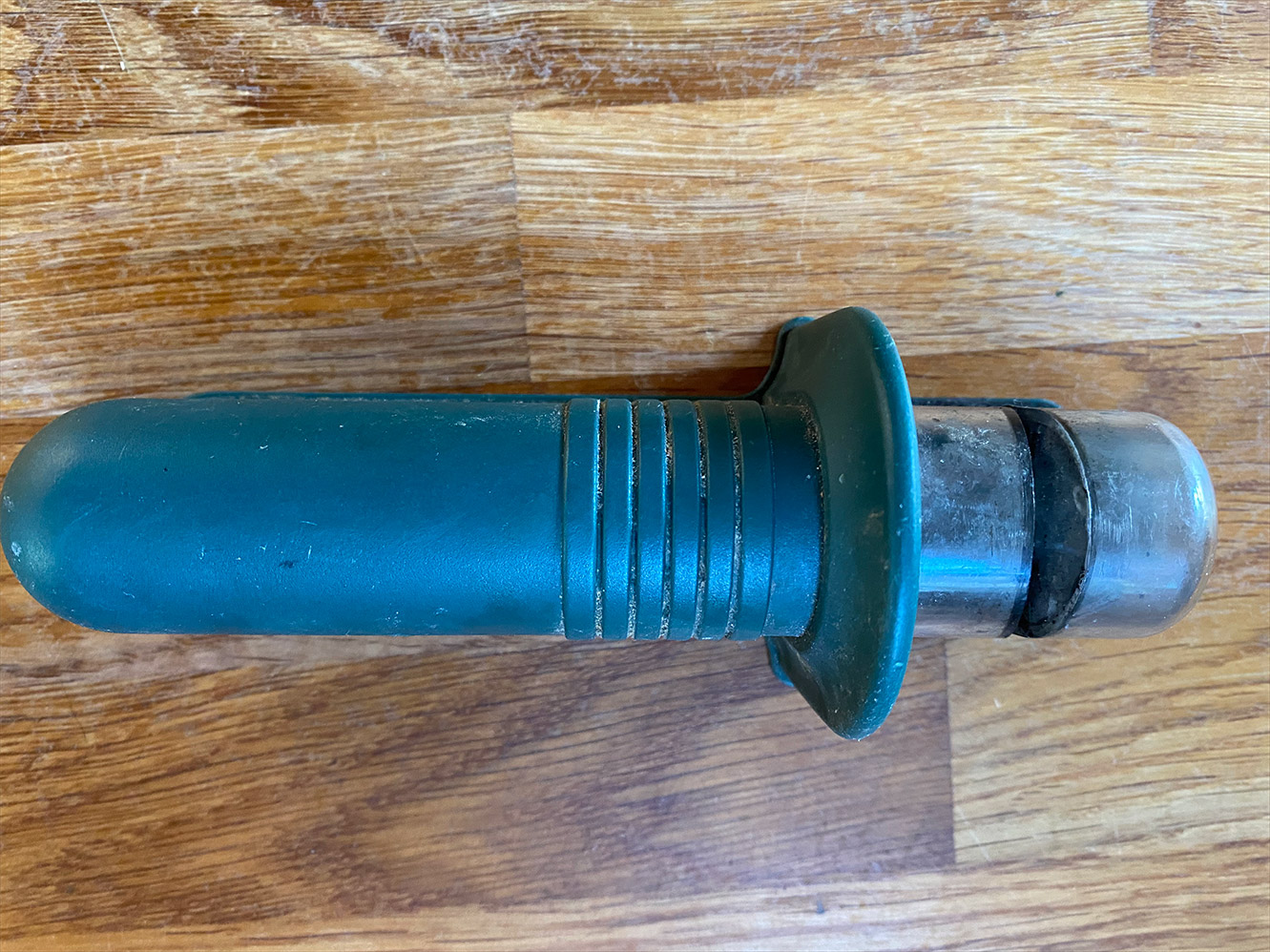
Main chefs knife
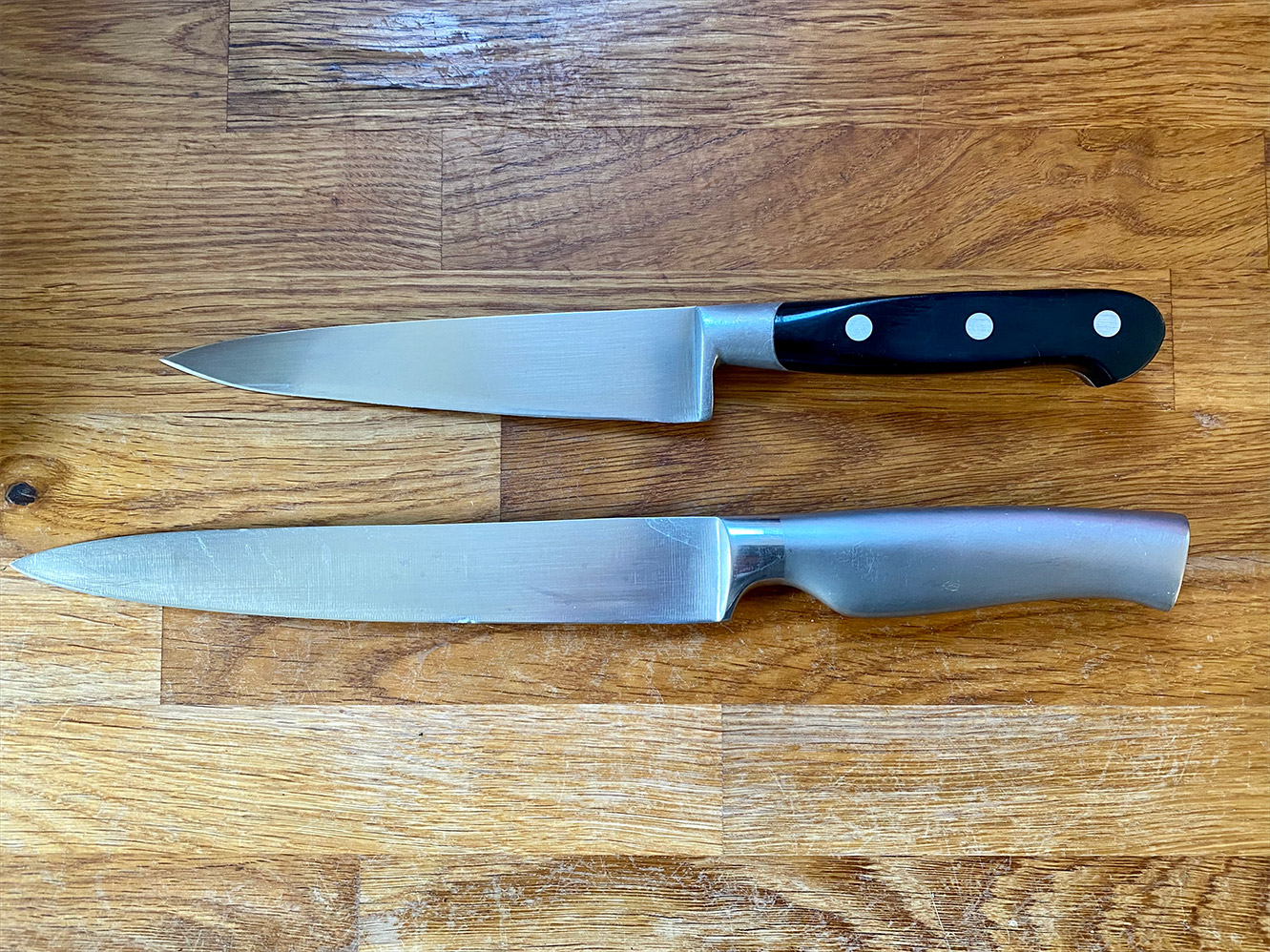
This has to do a variety of jobs so its imperative that this is a decent quality blade that you can sharpen. They come in all shapes and sizes and costs. I have two - both Sabatier which is a well known brand, and not horrifyingly expensive. Im not a fan of deep chefs knives - in my opinion you want a fairly shallow one, but its just personal taste I guess.
Often commercial kitchens often have a selection of general knives. The chefs will often keep their best knives for themselves in a case or roll which they rarely take out and use these general knives most of the time. These are characterised by being best quality for cheapest price and quite often a sharpening service makes them as sharp as you’ll get, so it just shows that you don’t really need these massively expensive knives. But you know, if you have the money for a set of globals, and thats thousands for a genuine set, most Ive seen are cheap copies that are OK but then you may as well just buy a good commercial knife rather than trying to pretend you have the money for the real thing. Good luck to you. There is always something in the kitchen that requires cash, these knives can be bought for sensible money. The curve of the knife is important as it gives you the chopping action when rolled on the board. I have a shorter one with a 4cm width blade at the hilt and about 20cm long and a longer thiner one thats more flexible for other larger jobs. Combined price of these blades was about £80. Maybe more expensive now, but not mental money.
In a scrape they will do anything, you can use one as a cleaver by hammering something heavy on that top of the blade, you can skin fish if your skilful enough, you can chop cabbages and so on but there is always a specialist knife in the draw and why not have one if you don’t spend daft money on them.
Skinning knife - could also be a boning knife.
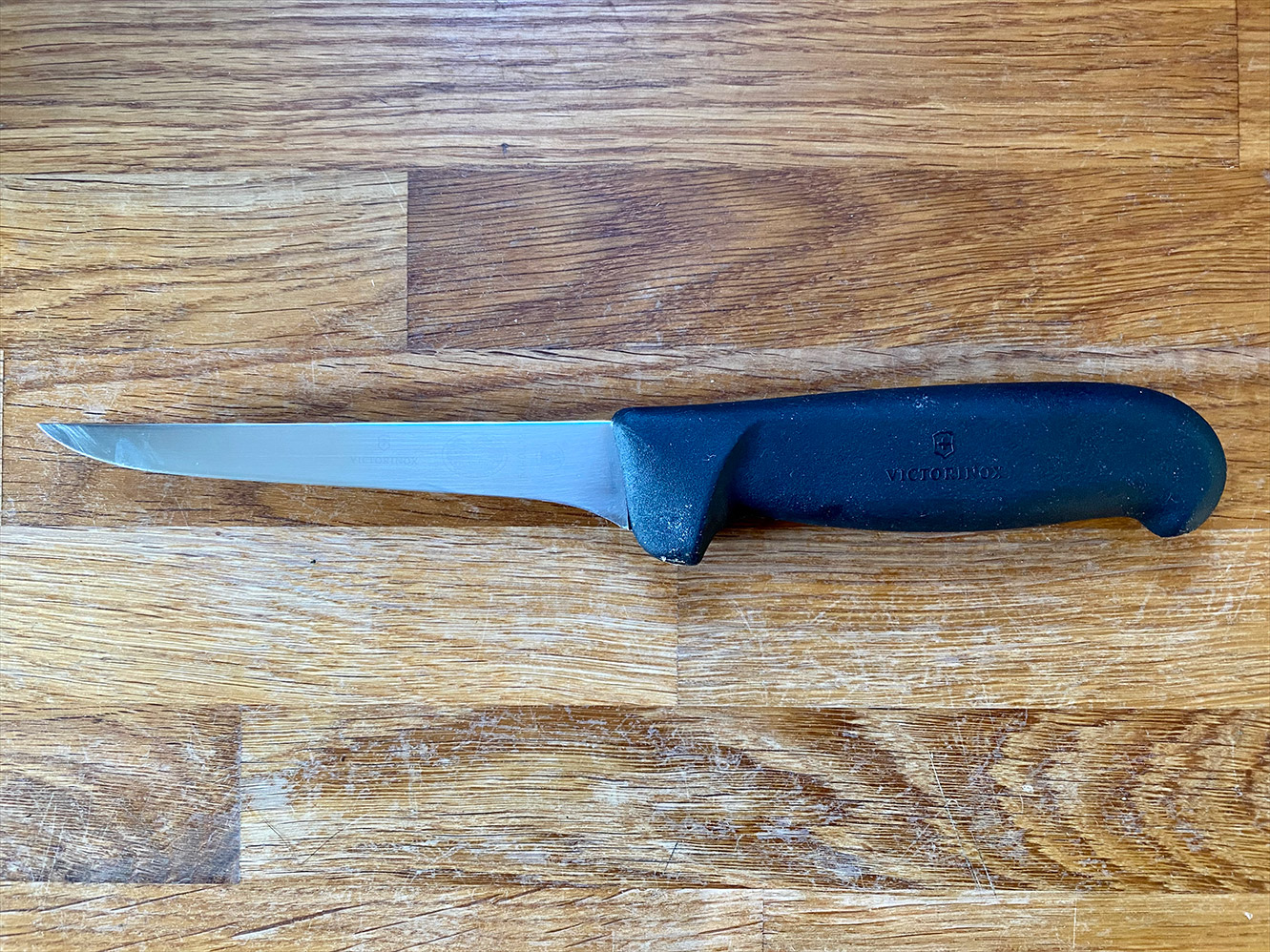
This knife is characterised by being thin and shallow, and I guess a boning knife is slightly more rigid over a skinning knife that would be a bit more flexible. I use mine for both jobs - just being really sharp is the key bit. Mine is a Victorinox and cost £30. That is about right for me. Quality and not too expensive. The shallow blade means its easy to poke in and around bones etc and its used less so gets duller more slowly.
Chopper
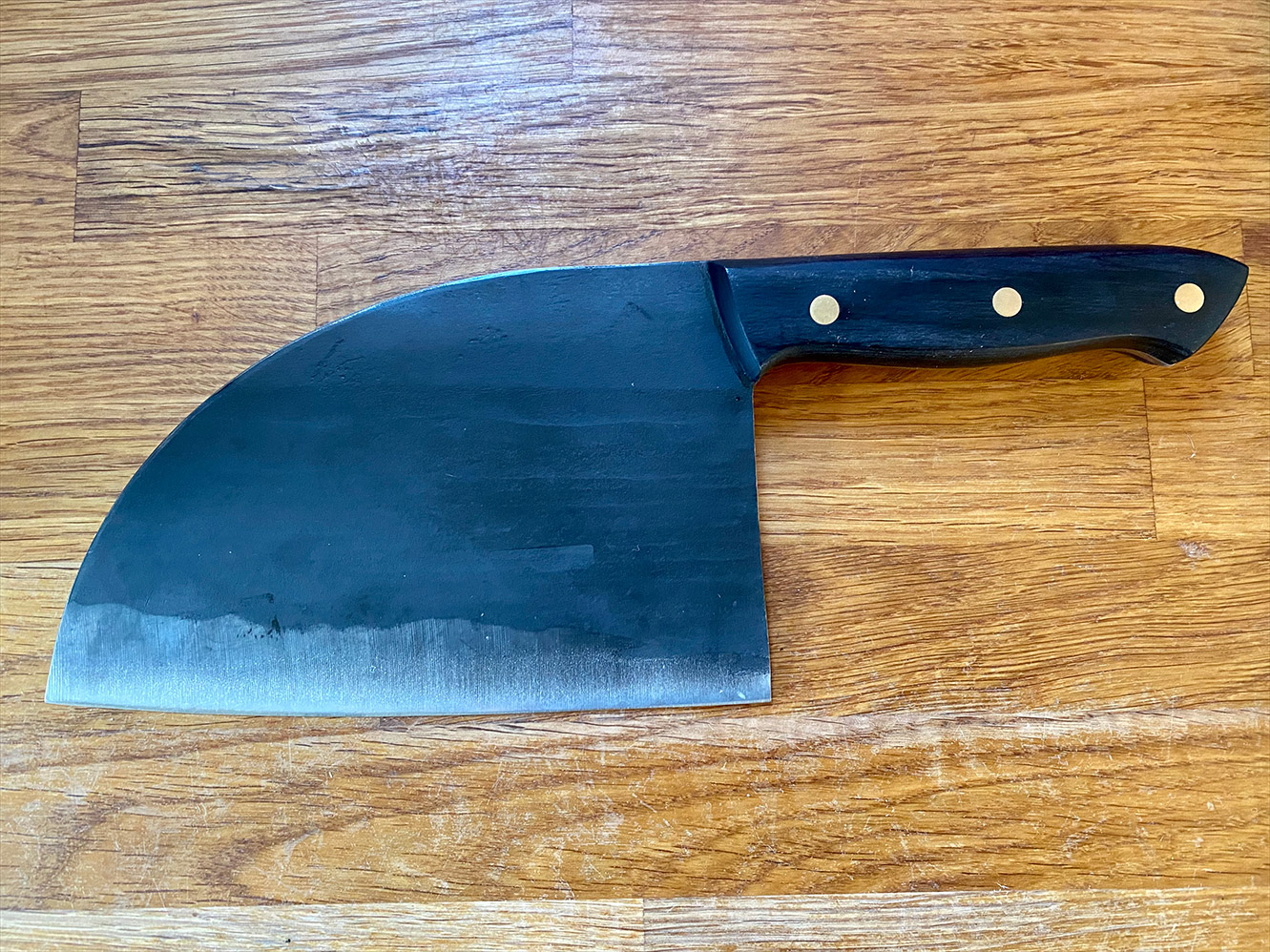
Now you could argue this is a redundant knife as you could easily do it with a general chefs knife, but there is something much easier about chopping a big round iceberg with this knife, or cabbage, or carrot - it has a substantiality to it, a weight, as well as a deep blade so the thing just goes through whatever you throw at it. You can hold them in the middle as it were because the blade is much deeper. Mine is quite an expensive one - folded steel with a fancy sheath, but a good quality standard one would have been fine. The blade is not designed for doing the job of a cleaver which has a much thicker blade with less of an angle on the knife edge so its doesn’t damage as easily. Many people make the mistake of using their chopper as a clever and break them. They also come in variety of very expensive ones for all kinds of silly things like Sushi which apparently justifies the £500+ cost which is just nonsense in my opinion - unless you are doing it day in and day out in your own sushi restaurant.
Cleaver
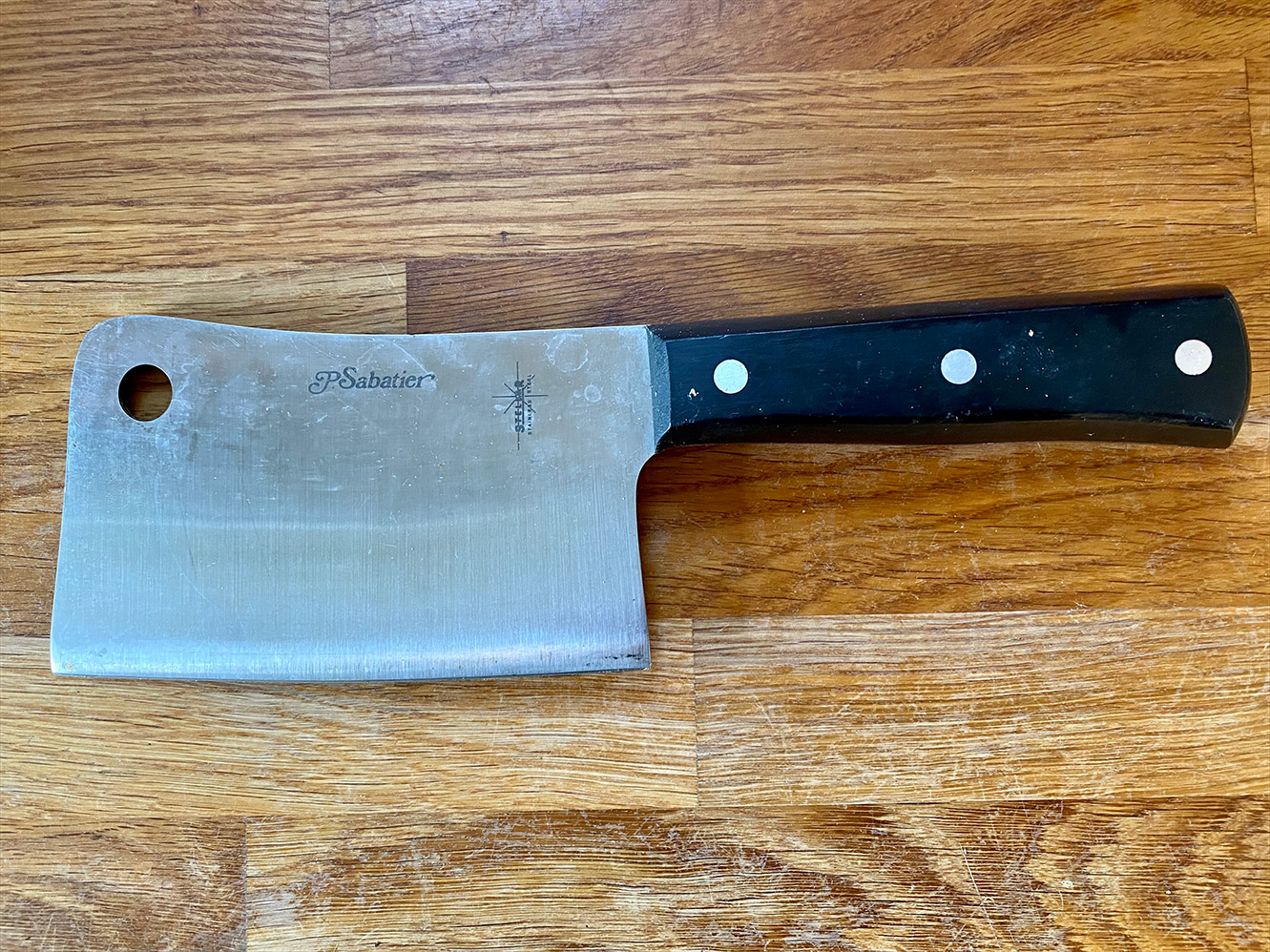
This blade is basically a massive heavy chunk of steel with a blade put on the side. I happen to have a more expensive one, but you can get quite cheap ones that do the job fine. I can happily chop up bone with it and not worry about damaging it. This is a kitchen cleaver and is much different to a butchers cleaver - its small for starters, because its heavy - and bigger you’d have a problem wielding it. Its just the right size for doing a few heavy chops - like a chicken carcass you’re quartering or removing a flat fish head. Even though these things might sound a bit light, fish bone is quite soft etc - you’d be surprised. Try and do it with a chefs knife or a chopper and its easily damaged. This is the correct tool.
Carving knife

For carving meat, but bears many similarities to a bread knife and to be honest I use mine for both. It has a serrated edge to saw but not so rough as to make a mess. In truth these knives are unnecessarily fancy - its just what I happen to have from doing pastry, but they do the carving job really well so I kind of adapted them to more everyday use. Anything that needs slicing where the thing needs to come away. Ive got a godawful cheap one - like a kitchen devil type that I often use for bread as well. Scallop edged so stuff lifts away as its being cut - where a chefs knife will go through and the already cut part of the item will stick back to the main body of the item you’re cutting. The are a bit of a bugger to sharpen.
Turning knife

Or you could call it a veg knife really. The pricier versions are used for quickly shaving veg into shapes so might have a curved blade. Generally they are light and small. You cant do this stuff even with a small chefs knife. You can peel spuds with one - or should be able to. As you can see the tip was damaged on this one - which hasn’t stopped me using it as ever.
Kitchen Scissors

Chunky, strong and sharp - they will cut a chicken in half or trim the skirt off of flat fish. Really useful where you don’t want to be unnecessarily using a knife because it could slip and injure you or damage something.
